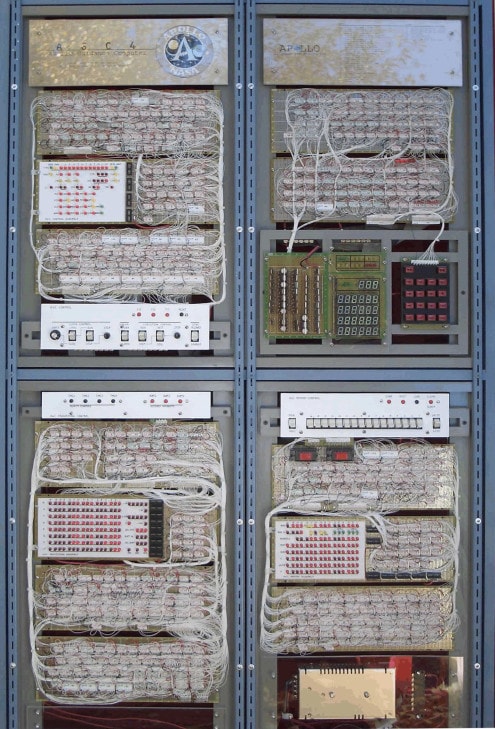Let’s me take the most famous quote in the Space Race history from Neil Amstrong. “That’s one small step for a man, one giant leap for mankind”
One month ago, an ex-colleague @mt_aertec shared a link that fascinated me instantly. It was about the Apollo Guidance Computer (AGC) that put Apollo 11th on the Moon.
Then I heard “What a nerd” , “a man with a lot of free time”, etc, etc. But clicking in that link, open me an unbelievable treasure of curiosity (as MARS Rover :)). I have had a first sight in the PDFs written by John Plutorak, and I see the enourmous effort he made and at the same time, the logical and simplicity toughts he took. He is an engineer from head to toe. He just simply wanted to build a computer. Four years later this is the result.

The pad with the flight program.

The full AGC. The upper left is the the control logic module, lower left is the CPU! 2Mhz (the original was 1Mhz), 15Kb ROM (12Kb original) and 1Kb of RAM. The upper right has the I/O module and the pin-pad for the commands.
I want to get deep in the docs, all the system was built on C++ and Assembler, before to get a full opinion, I think these material is perfect for Computer Fundamentals in any Computer Science School. See this sequence diagram! How many of them I’ve drawn…. it isn’t beautiful? (OMG I’m a nerd…)

I promise to write more about this fantastic project. By the way, the soviets had one too 🙂
If you desperately need mor info, see this MIT book (mine is on the way!) Beyond the limits
For further information:
All the AGC documentation: Galaxiki
Wiki: AGC

This work by Pedro Garcia is licensed under a Creative Commons Attribution-NonCommercial-ShareAlike 3.0 Unported License.


